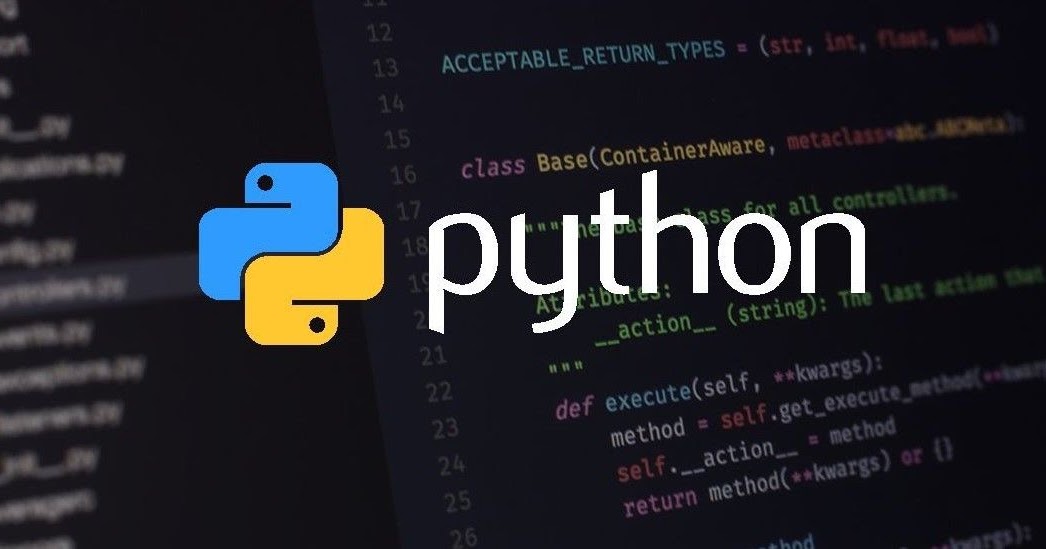Python is a high-level, general-purpose programming language. Its design philosophy emphasizes code readability with the use of significant indentation. Its language constructs and object-oriented approach aim to help programmers write clear, logical code for small- and large-scale projects.
Python is dynamically-typed and garbage-collected. It supports multiple programming paradigms, including structured (particularly procedural), object-oriented and functional programming. It is often described as a "batteries included" language due to its comprehensive standard library
Guido van Rossum began working on Python in the late 1980s as a successor to the ABC programming language and first released it in 1991 as Python 0.9.0.
Python 2.0 was released in 2000 and introduced new features such as list comprehensions, cycle-detecting garbage collection, reference counting, and Unicode support. Python 3.0, released in 2008, was a major revision that is not completely backward-compatible with earlier versions. Python 2 was discontinued with version 2.7.18 in 2020.
All the files related to Python ends with .py ( .py is the extension to specify that it's a Python program ).
eg :- main.py, basics.py
A Python module is a file containing Python definitions and statements. A module can define functions, classes, and variables.
A module can also include runnable code. Grouping related code into a module makes the code easier to understand and use. It also makes the code logically organized.
😵💫😵💫😵💫 ❓❓
modules is a collection of predefined functions, Classes.
( predefined functions are those functions that are already defined and available to use in the program )
😮😮😮
in different languages its know by different name like library, header file, etc. (so don't be confused)
examples :-
math, string, random
We include the modules by using
import
syntex :-
import <module>example:-
import numpyYou can choose to import only parts from a module, by using the from keyword.
syntex:-
from <module> import <function>
example:-
from math import sqrtIn computer science and computer programming, a data type or simply type is an attribute of data which tells the compiler or interpreter how the programmer intends to use the data.
Note :- Most programming languages support basic data types of integer numbers (of varying sizes), floating-point numbers (which approximate real numbers), characters and Booleans.
A data type constrains the values that an expression, such as a variable or a function, might take.
This data type defines the operations that can be done on the data, the meaning of the data, and the way values of that type can be stored.
A data type provides a set of values from which an expression (i.e. variable, function, etc.) may take its values.
TRANSLATION:-
Data types are the classification or categorization of data items. It represents the kind of value that tells what operations can be performed on a particular data. Since everything is an object in Python programming, data types are actually classes and variables are instance (object) of these classes.
in singleLine explanation "datatype are the classification of data in to different types"
😮😮😮
we have a wide range of datatype
like:-
- int
- float
- boolean
- char
click here or open the variables.c file from week-0-Basics to see the reference code
Python is not “statically typed”. We do not need to declare variables before using them or declare their type. A variable is created the moment we first assign a value to it. A variable is a name given to a memory location. It is the basic unit of storage in a program.
-
The value stored in a variable can be changed during program execution.
-
A variable is only a name given to a memory location, all the operations done on the variable effects that memory location.
variables are containers thats stores a value.
assigning value AKA giving Value to a variable, its just like saying x = 1 in Maths
so, x = 1 means what, It means that there is a variable named x and it stores a value of 1 ( its Value is 1 ).
y = 2 # variable declaration and assigning value in a single lineRules for creating variables in Python:
- A variable name must start with a letter or the underscore character.
- A variable name cannot start with a number. A variable name can only contain alpha-numeric characters and underscores (A-z, 0-9, and _ ).
- Variable names are case-sensitive (name, Name and NAME are three different variables).
- The reserved words(keywords) cannot be used naming the variable.
